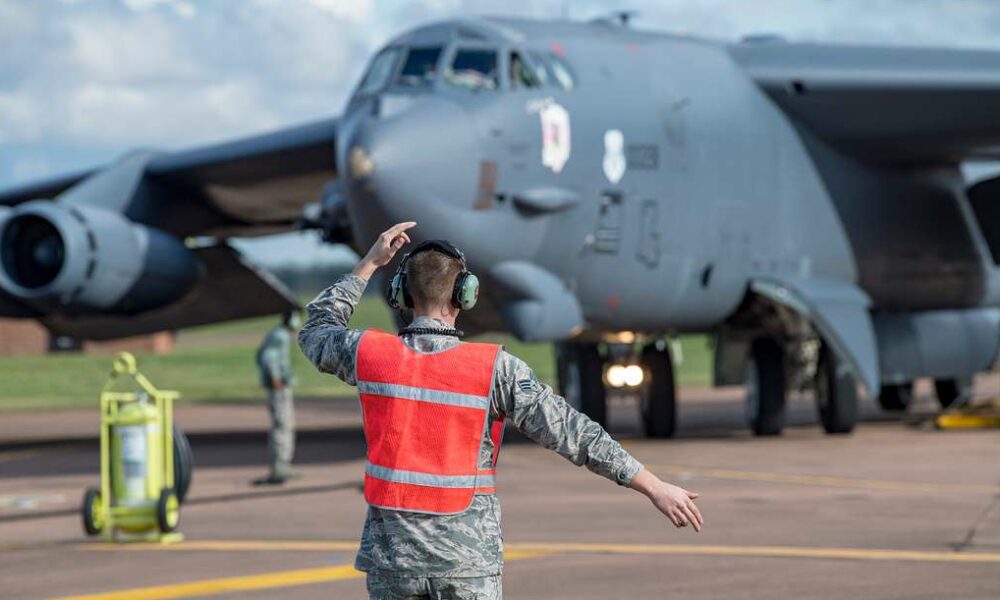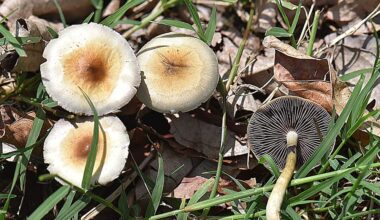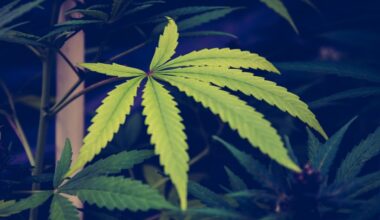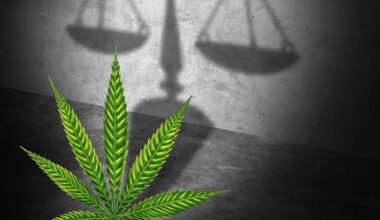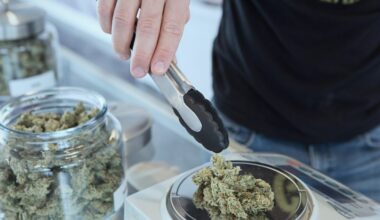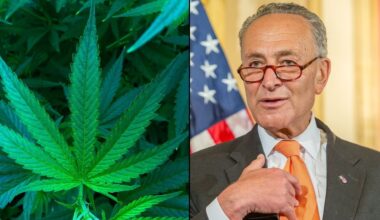The Air Force and Space Force are now giving recruits a second chance to enlist if they test positive for marijuana during the enlistment process.
The U.S. military branches announced the drug screening policy change last week following a review that was first revealed last month. For now, the reform is being enacted on a trial basis under a pilot program that will end in September 2024.
While active duty service members are still strictly barred from using cannabis—regardless of state laws—recruits who score high enough on their qualification tests, don’t have convictions on their records and otherwise meet enlistment standards are eligible for a waiver if they initially test positive for THC metabolites.
The waiver will allow prospective pilots and space cadets to retake the drug test after 90 days.
“Previously, a positive THC result on the initial test would have led to a permanent bar from entry,” an Air Force spokesperson told Air Force Times, which first reported the pilot program. But now, for “those who have been granted a waiver pass a second test, candidates will be allowed to enlist.”
The military branches will review the results of the pilot program after two years to determine whether they will make the policy permanent, which would align them with other divisions of the military like the Army, Navy and Marine Corps.
“We have to be exceptionally smart in how we assess the risk,” Air Force Recruiting Service commander Maj. Gen. Ed Thomas told reporters last week. “We’ve been able to collect a lot better data…to be able to make outcome-based medical decisions on who we bring in and who we don’t.”
This is a notable development for the branch, as the Air Force instituted a policy in 2019 barring service members from using even non-intoxicating CBD, even if its derived from hemp and is therefore federally legal under the 2018 Farm Bill.
A Massachusetts base of the Air Force released a notice last year stating that service members can’t even bring hemp-infused products like shampoos, lotions and lip balms to the base. “Even if it’s for your pet, it’s still illegal,” the notice said.
Officials with the military branch also said in 2018 that it wants its members to be extra careful around “grandma’s miracle sticky buns” that might contain marijuana.
Over the past several years, particularly since hemp was legalized, multiple military branches have notified their rank-and-file about their specific rules around cannabis.
Just this month, the Department of Defense (DOD) put out a notice expressing concern that using CBD-infused products like hand sanitizer or hemp granola could inadvertently compromise “military readiness,” and so they’re off limits.
One of the first attempts by the U.S. military to communicate its cannabis ban came in the form of a fake press conference in 2019, where officials took scripted questions that touched on hypotheticals like the eating cannabis-infused burritos and washing cats with CBD shampoos. That was staged around the time that DOD codified its rules around the non-intoxicating cannabinoid.
The Navy, for its part, issued an initial notice in 2018 informing ranks that they’re barred from using CBD and hemp products no matter their legality. Then in 2020 it released an update explaining why it enacted the rule change.
The Naval War College has gone so far as to warn Sailors and Marines about new hemp products on the market, issuing a notice earlier in April that says members can drink a new Pepsi-owned Rockstar energy drink that contains hemp seed oil.
However, that military branch does permit waivers for recruits who test positive for THC if there are no other outstanding issues with the candidate. The Marine Corps also permits temporary waivers for THC-positive applicants.
The Coast Guard said that sailors can’t use marijuana or visit state-legal dispensaries.
A factor that may have influenced these policy updates is that the Substance Abuse and Mental Health Services Administration released guidance to federal agency drug program coordinators in 2019 that outlined concerns about THC turning up in CBD products and causing failed drug tests. The agency issued an updated warning in 2020 after several more states voted to legalize marijuana.
A government-funded report from the RAND Corporation that was released last year looked into U.S. Army recruits and concluded that past cannabis use has relatively little impact on overall performance.
An Army spokesperson told Military Times that the army provides THC-positive recruits with a 90-day waiver before they can try to join the service again. A second positive test would render the recruit permanently disqualified.
As part of the House-passed National Defense Authorization Act (NDAA), a provision from Rep. Anthony Brown (D-MD) calls for a review of cannabis sentencing standards under military code, and would mandate that the Military Justice Review Panel “develop recommendations specifying appropriate sentencing ranges for offenses involving the use and possession of marijuana.”
Meanwhile, the U.S. Department of Veterans Affairs (VA) has separately faced criticism over its stance on cannabis issues.
In March, for example, VA made clear that it won’t provide support for treatment involving marijuana as part of a new grants program aimed at preventing veteran suicide.
VA’s position on marijuana has been a source of consistent frustration for advocates and veteran service organizations who have been pushing for expanded research into the therapeutic potential of cannabis.
House and Senate committees held joint hearings in March to hear from veterans service organizations (VSOs) about how Congress and the federal government can better serve their constituents, and several of the groups brought up the need to ease restrictions on marijuana.
The testimony echoes what the VSOs have repeatedly raised with lawmakers. The specifics ranged in scope between the various groups, but the overall message was made clear: military veterans uniquely stand to benefit from marijuana treatment and it’s time for Congress to do something about it.
Photo courtesy of Defense Visual Information Distribution Service.
Medical Disclaimer:
The information provided in these blog posts is intended for general informational and educational purposes only. It is not a substitute for professional medical advice, diagnosis, or treatment. Always seek the advice of your physician or other qualified healthcare provider with any questions you may have regarding a medical condition. The use of any information provided in these blog posts is solely at your own risk. The authors and the website do not recommend or endorse any specific products, treatments, or procedures mentioned. Reliance on any information in these blog posts is solely at your own discretion.
